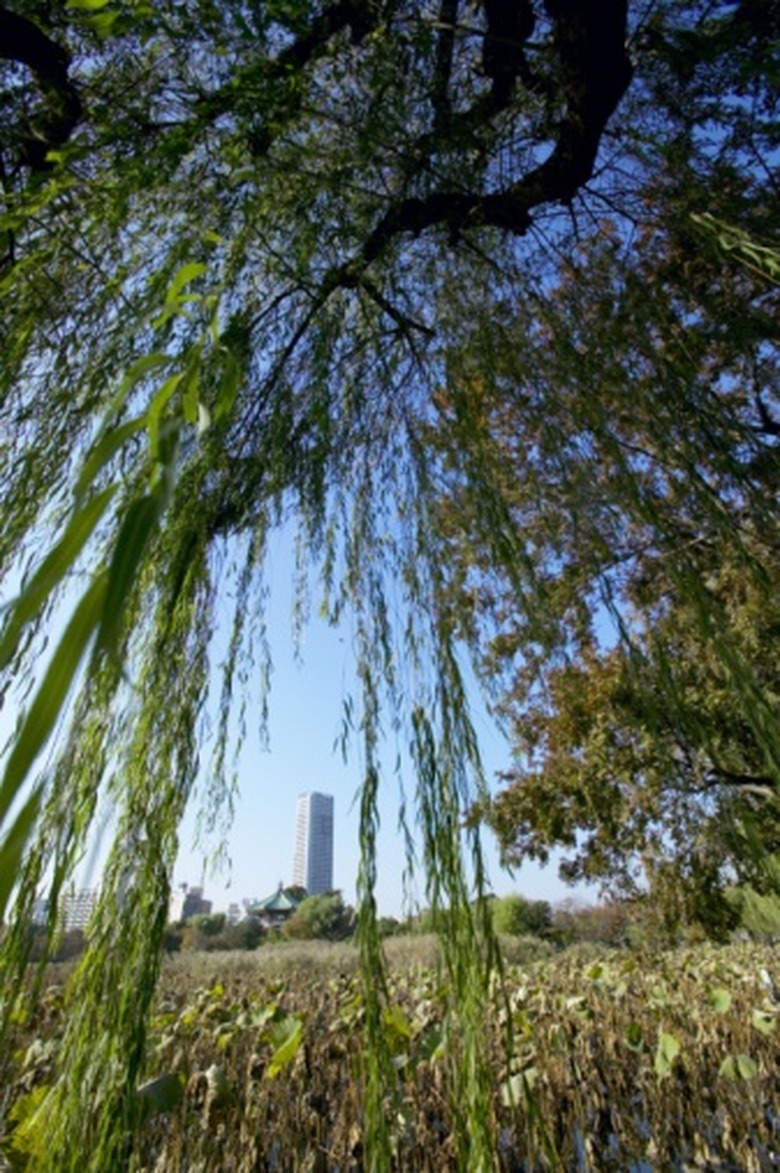How To Care For A Dying Weeping Willow Tree
Things Needed
-
Hand saw
-
Knife
-
Rubbing alcohol
-
Wood chip or bark mulch
-
Fertilizer
Weeping willows are tough trees that can survive a variety of problems. According to horticulturalist Ron Smith at the North Dakota State University Extension, they never die suddenly. Instead, they die gradually from fungus or other conditions, while still producing new, salvageable growths. No matter how dire the situation, you may still save a dying willow tree and restore it to its former health with appropriate treatment and care.
Step 1
Remove diseased branches, twigs and bark with a handsaw or knife. Disinfect your tools with rubbing alcohol when moving from one area to another to prevent the disease from spreading. Rake away the fallen, diseased debris.
Step 2
Water thoroughly but infrequently to ensure your weeping willow does not suffer water stress, especially while the tree is in poor health. Though willows usually survive drought, proper irrigation promotes health, making it easier for willows to recover from diseases and other problems.
Step 3
Apply mulch made of wood chips or bark around the tree's base to help the soil retain moisture and prevent weeds from growing. This enables the willow tree to absorb nutrients from the soil without competition. Because weeping willow roots spread well beyond the trees' canopies — sometimes three times the distance from the trunk to the canopy — spread mulch in a wide circle around the tree. Don't build it up around the trunk, as this may lead to rot.
Step 4
Remedy root rot by increasing soil drainage. While weeping willow trees enjoy moist soil, soggy conditions can cause rot that leads to their decline. To make watering and mulching safer, add organic matter to the soil, let rainfall perform most of the tree's irrigation and water several feet away from the tree trunk.
Step 5
Fertilize the weeping willow every year to ensure it receives all the nutrients it needs for healthy growth.
